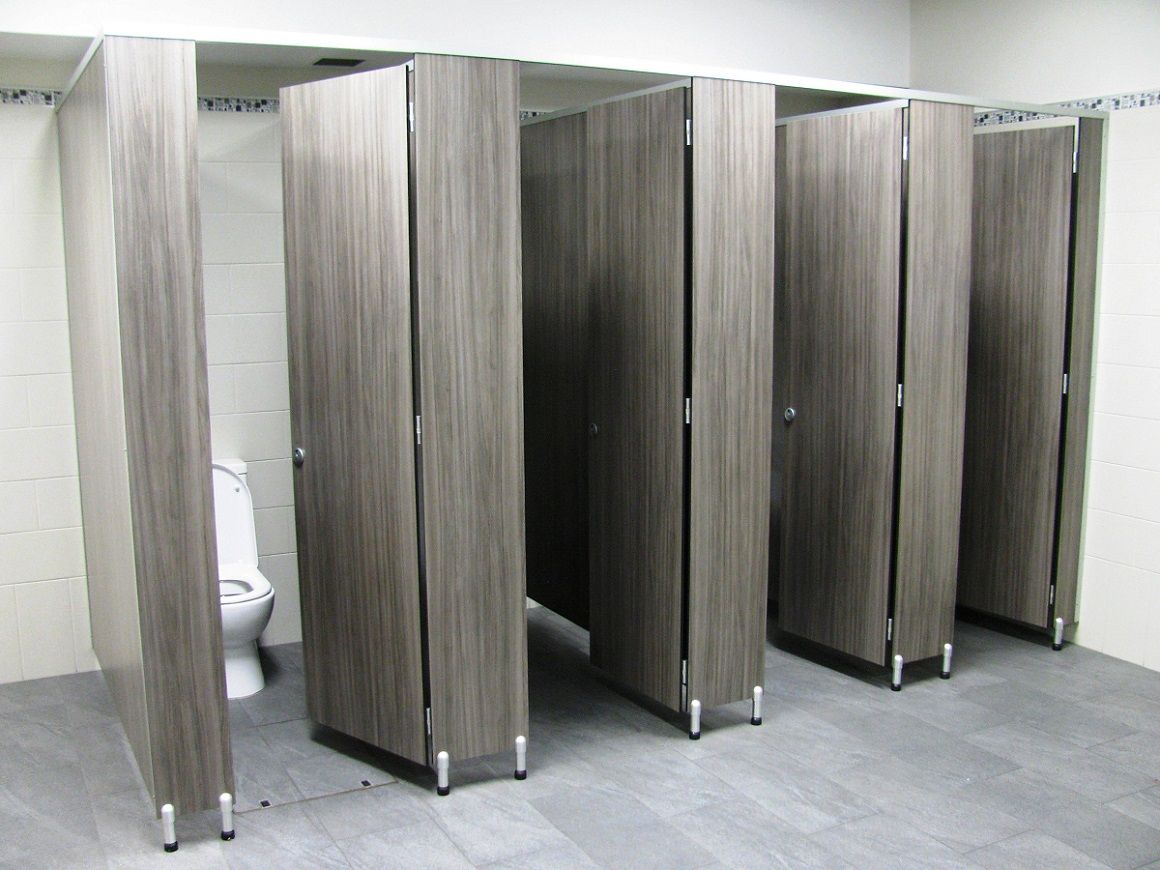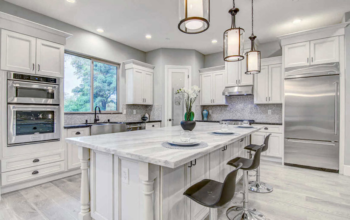Bathroom stalls are critical components of a public restroom environment. They provide people with much-needed privacy in an otherwise public facility. This article explains the many components of a bathroom stall and the various layouts that enable these parts to serve their purpose.
Hardly anyone takes into account learning more about bathroom stalls until they are needed to do so, perhaps to advertise or install them. Anything other than that, the only time that somebody would regard a bathroom stall is if it was covered in graffiti.
Bathroom stalls could provide a safe, private place for toilet users to do their personal business in a public area. It may not appear so, but a great deal of labor goes into properly installing a bathroom stall so that it serves its purpose well. A conventional bathroom stall is composed of several components, and if any of these components are installed incorrectly, the user’s safety and privacy within the stall may be risked.
The Essential Components of Bathroom Stalls
Bathroom stalls comprise headrails, hinges and brackets, pilasters, pilaster shoes, doors, panels, and latches. These parts function in tandem to safeguard toilet users from prying eyes.
Architects and sub-contractors must adhere to ADA guidelines while designing and planning the installation of these parts. These ADA codes ensure that some potential issues would not occur:
- The door to the bathroom stall must not come into touch with the toilet bowl itself.
- There must be sufficient space between both the toilet stall door and toilet to allow users to use the toilet comfortably and with enough legroom.
- There must be no gaps or spaces between the panel, pilaster, or door. If gaps cannot be avoided, the gaps must be kept to a minimum.
- Toilet stalls must have adequate space for occupants to move around — in other words, enough space for someone to go in and out of the cubicle.
Headrail
The headrail is the partition’s highest part. In public restrooms in the United States, the headrail is solely linked to the stall’s pilasters. The headrail, door, and panels should all have a gap between them.
However, this layout is uncommon in UK public restroom designs. Typically, in the UK, headrails are attached both to the pilasters as well as the panels, leaving very little, if any, the gap between them.
The gap that you will notice in the US layout is intended to encourage proper airflow within the restroom, designed to ensure that no offensive odors or fumes accumulate within a single stall.
Pilaster
The pilasters are the bathroom stall’s columns or legs. In the majority of public restroom setups, these are the only pieces of a bathroom stall that would come into contact with the floor. This leaves an opening in between the partition door and its panels as well as the floor. And so is the case with the gap seen between headrails, panels, and doors; this space allows for improved air circulation in the restroom.
Furthermore, the gaps in such stalls are advantageous in the event of an emergency. For instance, when there is a fire, one can escape safely by crawling through the gaps or spaces at the bottom.
Pilaster Shoe
Pilaster shoes are essentially anchors that secure the pilasters to the ground. They work hand in hand with the brackets to prevent the bathroom stall from wobbling or even collapsing.
Pilaster shoes are typically constructed of stainless steel since they must be durable and strong to maintain the upright and stable position of the bathroom stalls. Pilaster shoes can even be made out of Zamac and are also available in a variety of finishes.
Hinges and Brackets
The bathroom stall’s door hinges must be exceptionally durable to protect the stall occupant. This helps avoid unintentional stall door opening. Even though a door’s latch mechanism includes an “occupied/vacant” feature, some individuals disregard this feature and attempt to force open these doors. Together with the latches, hinges assist in keeping these doors locked even under the most forceful tugs.
On the other side, brackets secure the bathroom stall panels to bathroom walls, adding additional stability to the partitions.
Panel
The panel is the component that separates the stalls. This significant part of a bathroom stall is what effectively guarantees privacy in each stall. To do so effectively, they must be designed and built with durable materials. The following are some of the most often used materials for toilet stalls:
Plastic Laminate
Plastic laminate is created by immersing thin Kraft paper layers in melamine resin. This is then hardened by subjecting it to high pressure and heat.
Plastic laminate panels are available in a variety of colors and patterns. It is pretty simple to modify! Before it is soaked and cured, the decorative paper could be used as a top layer — on top of the Kraft paper’s initial layers.
The best advantage of all, this material is the least expensive of all the toilet partition materials available.
Solid Plastic
Commonly called high polyethylene, or HDPE, solid plastic is a type of plastic. It is a sturdy, moisture-resistant material that would take a great deal to ruin.
Vandalism is not an issue with HDPE toilet partitions because they are resistant to scratches or even graffiti.
Stainless Steel
Not only do stainless steel panel partitions appear to be strong, but they also seem more luxurious. Because of its sleek appearance, this material is frequently in high demand.
Phenolic
Solid phenolic is one of the most rigid materials available for bathroom partitions. It is constructed from many layers of Kraft paper that have been glued with phenolic resin using an intense heat and pressure technique.
Despite its higher cost, this material is preferred because it reliably secures partitions against damage.
Door and Lock
Finally, a bathroom stall door and lock. These safeguard the user’s security by preventing the door from being opened by other restroom users.
Bathroom locks or latches come in a variety of shapes and sizes. Simple public restrooms are typically equipped with merely a bolt lock mechanism on their bathroom stall doors. The stall lock is another typical type of lock. Stall locks are available with either a slide or a thumb turn lock mechanism.
Most architects and subcontractors choose indicator locks for toilet walls because they provide a greater feeling of security for users. These indication locks have an indicator that alerts other restroom users when the stall is occupied or vacant.
Related Posts












